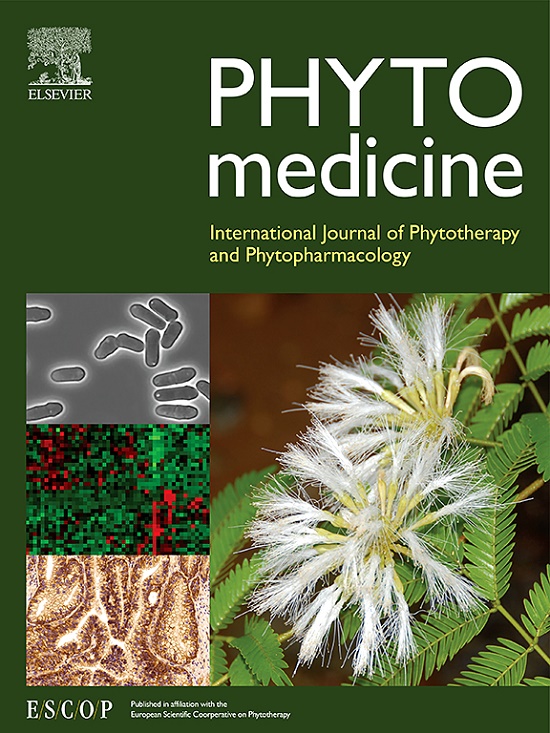Deoxyshikonin from Arnebiae Radix promotes hair growth by targeting the Wnt/β-catenin signaling pathway
IF 6.7
1区 医学
Q1 CHEMISTRY, MEDICINAL
引用次数: 0
Abstract
Background
Alopecia is a common skin condition with limited effective treatments. Arnebiae Radix (AR) is a traditional Asian herb used for various skin disorders. However, its specific components and the mechanisms underlying its hair growth-promoting effects remain elusive. Therefore, this study aimed to investigate the primary active components in AR that are responsible for hair growth as well as determine the molecular mechanisms responsible for treating alopecia.
Methods
Alopecia areata mice were employed to assess the influence of AR extracts on hair growth. The active AR components were identified via High-Performance Liquid Chromatography (HPLC). Furthermore, network pharmacology and molecular docking were carried out to predict the key targets of the main active AR compound, which were validated by Surface Plasma Resonance (SPR) analysis. Moreover, the mechanism of action of the identified active AR compound on human dermal papilla cells (HDPCs) and alopecia areata mice was investigated to determine its effects on relevant signaling pathways.
Results
It was found that Deoxyshikonin (Ds) was the active component in AR with hair growth-promoting potential. Furthermore, it was predicted that Ds targeted 112 alopecia-related targets, including biological processes (such as positive modulation of cell migration and protein phosphorylation) and pathways (including cell cycle- and Wnt signaling pathway-related genes pathways). Network analysis revealed that CCND1 and GSK3β were the hub targets of Ds when treating alopecia. Molecular docking showed a strong binding affinity between Ds and GSK3β, which was validated by SPR results. Moreover, Ds improved HDPC's proliferation ability and promoted hair regeneration in alopecia mice. Similarly, Ds increased VEGF and IGF-1, reduced TGF-β1 content and GSK3β expression, and enhanced the p-GSK3β and β-catenin expression in the Wnt/β-catenin pathway.
Conclusion
This study showed that Ds was the main active AR component with promising potential as a hair growth stimulant. Mechanistically, Ds primarily targets GSK3β to promote the Wnt/β-catenin signaling pathway. This suggests that Ds could be an innovative therapeutic candidate for promoting hair regeneration.

求助全文
约1分钟内获得全文
求助全文
来源期刊

Phytomedicine
医学-药学
CiteScore
10.30
自引率
5.10%
发文量
670
审稿时长
91 days
期刊介绍:
Phytomedicine is a therapy-oriented journal that publishes innovative studies on the efficacy, safety, quality, and mechanisms of action of specified plant extracts, phytopharmaceuticals, and their isolated constituents. This includes clinical, pharmacological, pharmacokinetic, and toxicological studies of herbal medicinal products, preparations, and purified compounds with defined and consistent quality, ensuring reproducible pharmacological activity. Founded in 1994, Phytomedicine aims to focus and stimulate research in this field and establish internationally accepted scientific standards for pharmacological studies, proof of clinical efficacy, and safety of phytomedicines.
 求助内容:
求助内容: 应助结果提醒方式:
应助结果提醒方式:


